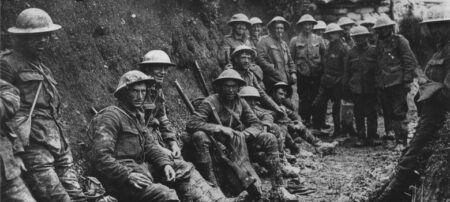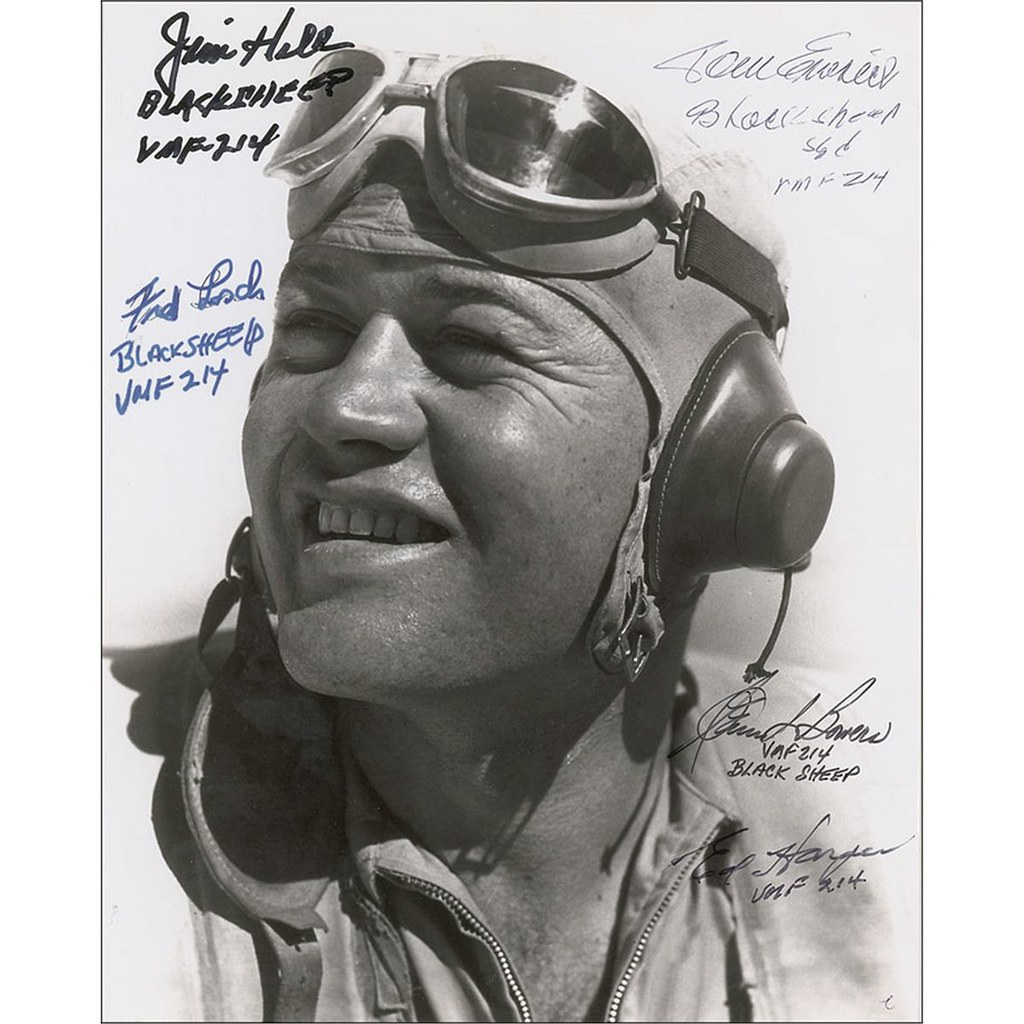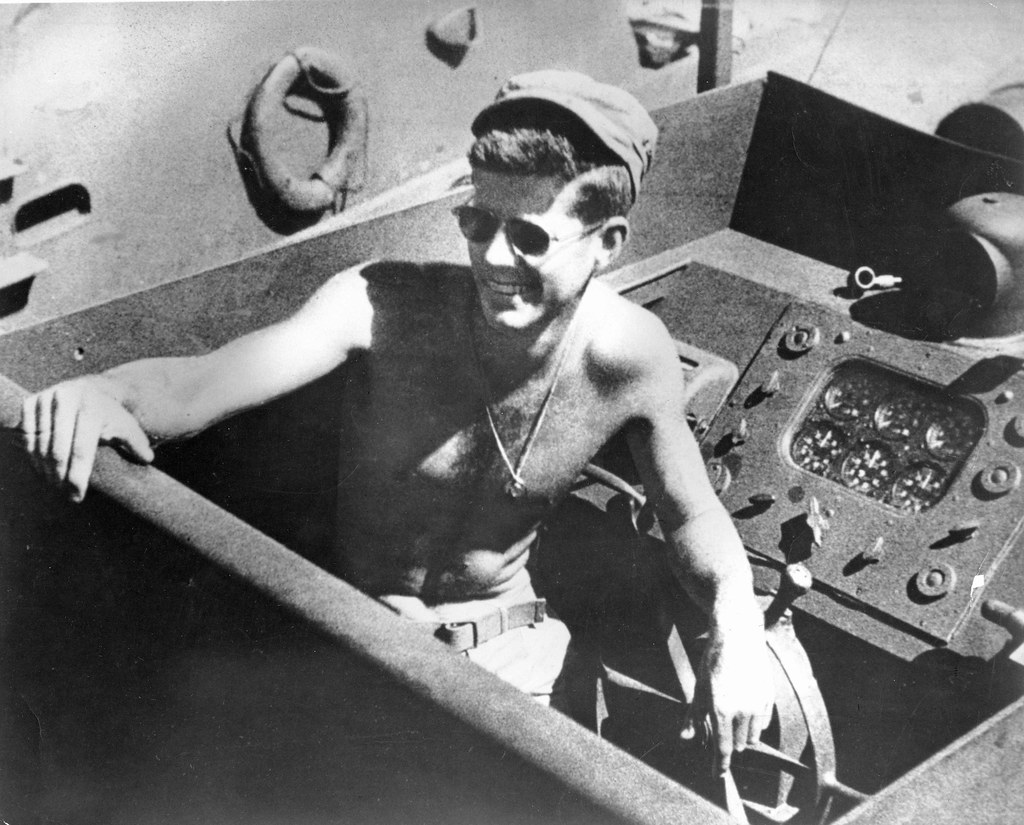The Futility of Fromelles

Going through some old family records and was reminded that my dad's stepfather was severely wounded at The Battle of Fromelles on 19 July 1916. A day described by Charles Bean as "the worst day in Australia's history". Almost 90 per cent of Fred's battalion (the 32nd) was wiped out in just 24 hours.
As a macabre twist to the tale, Fred was one of the wounded able to be recovered from the slaughter on the battlefield and sent back to England and a hospital in Colchester. He may well have laid there in the mud and blood for hours amid the cries and moans of his dying comrades before an informal truce was arranged to recover the living. After 'recovery' he was deemed fit to return to service and sent back to the front along with the few of his surviving mates. He was in fact in no fit state to fight again and had to suffer the ignominy of a court-martial. He spent the remainder of the war both humiliated and traumatised, serving in the animal veterinary hospital before finally being discharged at the war's end as medically unfit.

My funny old grandmother (whose baby brother was killed at El Alamein in 1942) used to relate one of Fred's enduring nightmares.
Fred's unit rushed into a German trench and in the brutal hand-to-hand fighting, he bayoneted a young German soldier. Unable to advance or retreat from the position, they were pinned down by merciless machine gun fire from the German's well-prepared defences.
As night wore on the haunting cries of the wounded and dying echoed across the quagmire. Right there in the trench this young, dying soldier cried for his mother until he finally succumbed in the early morning.
Fred lived until 1946, working when he could as an engineer in rural South Australia where he met my recently widowed grandmother in Pinnaroo.
Lest We Forget.


Heroes of the Solomons: The Coastwatchers
The role played by Australian Coastwatchers and their Melanesian scouts during the Pacific War

“The Coastwatchers saved Guadalcanal, and Guadalcanal saved the Pacific.”
- Admiral William F. Halsey USN
Words: Roderick Eime
When the conversation turns to Australia's actions in WWII’s Pacific Theatre, it invariably starts with tales of the Kokoda Track and how our brave and underresourced lads turned back a Japanese invasion. Well, all that is true of course, but it’s part of a much bigger picture.
While many military history authors fixate on Kokoda, Michael Veitch has made it his mission to shine a light on the many other actions and personalities who, for one reason or another, have been overlooked in our recounting of the campaign that occupied much of 1942.
One such motley group of highly effective espionage agents was actually comprised of mainly civilians who happened to be in the right place when the urgent need arose.
“The Coastwatcher organisation of World War II has been rightly described by their wartime leader, Commander Erik Feldt, as ‘one of the most successful spy rings of all time’, said Veitch, “achieving real battlefield results far in excess of their minuscule numbers.”
The need for these improvised coastal sentries came about after WWI when it was realised that our northern borders were almost completely undefended. At the outbreak of hostilities in 1914, German colonialists and their small militia detachments roamed and sailed unchallenged all across our porous frontier.
Commander Eric Feldt, the Queensland-born son of Swedish immigrants who had joined the Royal Navy (RN) in 1917, worked in Papua New Guinea in the 1930s and reenlisted when war broke out in 1939. With his regional experience and sharp military mind, he was given the task of forming a network of lookouts across PNG, Bougainville and the Solomons whose job it was to report on ship and aircraft movements in their vicinity.
Also critical to the success of the coastwatcher operation was the cooperation of the local native people. It was important, Feldt noted, that locals must be treated fairly and paid properly in order to gain their trust. Without the aid of villagers, the operation would fail.
Feldt drew on his contacts among missionaries, traders, administrators and plantation owners, supplied them with radios and hoped for the best. When the Japanese forces arrived on their doorstep any coastwatchers captured would receive little mercy and almost 40 fell into enemy hands. Of those, none survived the brutal interrogation that ensued.

But if the worth of Feldt’s secret men and women ever needed to be validated, one event stands out that changed the course of the war in the Pacific.
Initially, they had performed small, but heroic acts such as helping the few surviving stragglers from Rabaul escape their Japanese pursuers in January 1942. They also helped coordinate the evacuation by submarine of Europeans destined to be hunted and slaughtered by the enraged Japanese.
But it was in August 1942 as 19,000 US Marines and their supply ships were unloading on the beaches of Guadalcanal that a simple but vitally important radio message was relayed to the vulnerable invasion fleet.
Paul Mason was a short, half-deaf and malaria-impaired 40-year-old former plantation manager who was almost passed over for the mission. But Mason and his 2IC, Jack Read, bravely remained on Bougainville operating from behind enemy lines, providing vital weather reports. Then, on August 7, a telltale V-formation of Japanese dive bombers flew overhead on a course for Guadalcanal. Mason immediately radioed his now famous message: "Twenty-four bombers headed yours". These critical five words were relayed via Port Moresby, Townsville and Canberra to the US fleet anchored off Guadalcanal, giving them a vital 90 minutes to prepare for the attack.
Thanks to Mason’s message, the supply ships were withdrawn to safety and a flight of US Navy Wildcat fighters sent up to intercept the incoming attackers. Thinking they had the jump on the Americans, the Japanese bombers were instead taken completely by surprise and cut to shreds allowing the Marines to consolidate their beachhead.
The vicious fighting on Guadalcanal would rage until February 1943 when the last of the Japanese survivors were evacuated. From that moment on, the Allied forces were on the offensive, culminating in the unconditional surrender of Japan in September 1945.

"They watched and warned and died that we might live."

Sir Jacob Charles Vouza MBE, GM
Equally as famous and perhaps more so, is the courageous Jacob Vouza who was captured by the Japanese while on a dangerous patrol and beaten and tortured to near death.
Vouza survived the war, passing away in 1984 at the age of 84. For his exemplary bravery, he was presented with the Silver Star and Legion of Merit. In 1979, he was knighted by Queen Elizabeth II. In addition, he was awarded Great Britain’s George Medal and a scholarship fund was set up in his name to assist underprivileged Solomon Island children in attaining a better education.
Refusing to give any information to his captors, he was left for dead. When Vouza regained consciousness, he freed himself and crawled four miles back to Allied lines in order to deliver vital intelligence. When met by Martin Clemens, the Australian said he could “barely look at him” because of the severity of his wounds.
Source: www.battleforaustralia.org
Mosquito Squadron Attacks

I'd like to pay tribute to a much-loved family friend and my mother's last companion. Flight Lieutenant Kenneth Jackson served with the RAAF, attached to RAF 235 Squadron as part of Banff Strike Wing.
With pilot Harry Parkinson, flying the excellent DH Mosquito, the pair took part in numerous perilous raids against shipping, U-Boats and ground targets flying at tree-top level to avoid German radar, often returning to base with tree branches and telegraph wire caught in the undercarriage.
He was reluctant to talk about his experiences and never marched in ANZAC parades. It took all my life to get him to reveal some of the hairy moments, but clearly one stuck in his mind.
Late in the war, the Strike Wing aircraft were fitted with long-range 'drop tanks', giving the planes several hundred extra kilometres of range. As such they were able to surprise U-Boats approaching ports, thinking they were home safe. On one occasion (I think this was U-251, 19 April 1945) the boat was on the surface in the Kattegat (between Denmark and Sweden) heading for home after four gruelling months at sea. The sailors were relaxing on deck, smoking, reading and hanging their washing.
The whole squadron swooped, unleashing salvos of deadly 30kg rockets. Ken's eyes misted at the recollection and he stared blankly into thin air.

"The poor bastards on deck jumped into the freezing water, the rest never had a chance ... Harry was very good with rockets." U-251 sank in 30m of water with only four survivors, including the captain.

"There were extra rounds of drinks that night in the mess," Ken recalled, shaking his head.
Despite losing many friends on these dangerous missions, Ken considered his service fortunate. The "Mozzie" was a brilliant aircraft, fast and capable, and enjoyed a success (and survival) rate few other planes could match.
Knowing he would have been subject to interception by German fighters, particularly over Norway, I asked curiously, "What happened when the Focke Wulfs came up to attack you?"
"Oh, we just put the nose down, opened the throttles and got the hell out of there," Ken recalled calmly, "they weren't going to catch us."
By comparison, a school chum's father served in Bomber Command flying Lancasters. He earned a DFC, but at an enormous cost. Of his entire squadron who left Australia to fly with the RAF, only two returned - his pilot and himself. #Lestweforget.
A Real Black Sheep: Major Gregory “Pappy” Boyington

From the series: Heroes of the Solomons
If ever there was a larger-than-life, comic book-worthy action hero, it was US Marine Corps fighter ace, ‘Pappy’ Boyington, writes Roderick Eime
Boyington was born in Idaho on 4 December 1912 and took his first flight at the tender age of six. Not with some rogue barnstormer, mind you, but with Clyde Pangborn, a man who would later perform numerous daring feats including a trans-Pacific flight in 1931.
Clearly impressed with this experience and naturally drawn to military service, Boyington was an aviation cadet with the Marine Corps Reserve at the age of 23. By 28 he was a first lieutenant instructing at Pensacola, Florida.
A noted wrestler at college, he soon became known as a hard-drinking but likeable roughneck always sailing close to the edge of trouble. He had a certain charm, especially with the ladies, and a knack for upsetting his superior officers.

Looking for an escape as much as an opportunity, Boyington signed on with the famous volunteer air force, the ‘Flying Tigers’, and was soon in the air flying missions in P-40s over Burma under the command of "Colonel" Claire Lee Chennault. Many will remember John Wayne playing Capt. Jim Gordon in the famous, Oscar-nominated 1942 movie about the covert American operation. But Boyington, despite a (disputed) tally of six Japanese kills, was up to his usual antics and fell foul of Chennault who threw him out of the Flying Tigers. The two would never reconcile.
Even with such a chequered record, the US Marine Corps needed combat-ready fighter pilots and by early 1943, Boyington was on Guadalcanal as Executive Officer (XO) of Marine Fighter Squadron 122. It wasn’t until September that Boyington put together a team of hand-picked, unassigned pilots and reformed Marine Fighter Squadron 214. The first suggested name of ‘Boyington’s Bastards’ was dismissed by the USMC’s PR and instead became known as ‘The Black Sheep Squadron’.

Astride the potent F4U Corsairs with their new black bar insignia and pre-ordained reputation, VMF-214 set about tearing up the Japanese invaders, which they did with great aplomb. In less than three months, the renegade unit destroyed or damaged over 200 Japanese planes, half of them in air-to-air combat, as well as sinking ships and bombing shore installations. A Presidential Unit Citation was quickly bestowed on them for extraordinary heroism in battle and they became a minor sensation, grabbing headlines back home in the US. They even bet major league baseball players they could down a Zero for every cap they were sent.
After this first triumphant tour of duty in which Boyington had amassed over a dozen kills, the 26 pilots left their base at Munda and headed for Sydney and the once famous Australia Hotel for a period of serious R&R. The ornate and prestigious hotel opened in 1891 and once stood where the massive MLC Centre now stands in Martin Place.
Doubtlessly hung over, they returned to the Solomons for a second tour but just five days before it too was over, Boyington was ambushed by overwhelming numbers of Japanese fighters near Rabaul and shot down. He recalls this moment in his autobiography, ‘Baa Baa Black Sheep’.

"I threw everything in the cockpit all the way forward - this means full speed ahead - and nosed my plane over to pick up extra speed until I was forced by water to level off. I had gone practically a half a mile at a speed of about four hundred knots when all of a sudden my main gas tank went up in flames in front of my very eyes. The sensation was much the same as opening the door of a furnace and sticking one's head into the thing."
With his aircraft hopelessly damaged and he himself wounded by the explosion, Boyington baled out. Despite efforts by his men to locate him, he was plucked from the sea by a Japanese submarine and packed off as a POW through a series of camps, ending up in Yokohama at war’s end.
‘Pappy’ Boyington was repatriated after the war and received the Medal of Honor and the Navy Cross in his new rank as a colonel, but it wasn’t long until he was creating mayhem again, bouncing from job to job and drinking too much. Also a heavy smoker, his run of good fortune expired on January 11, 1988. Gregory Boyington, fighter ace and flawed American hero was dead at the age of 75.

His autobiography, written in 1958, attracted the attention of NBC television producers and a series of the same name was aired between 1976 and 1978 with Boyington played by co-director Robert Conrad. The series was set on a fictional island called Vella la Cava, which obviously referred to their one time base at Vella Lavella (Barakoma) where traces of the airfield can still be seen.
Apart from Barakoma airfield on Vella Lavella, VMF-214 under Boyington was also based at Banika Island in the Russell Islands Group, Henderson and Munda before moving to their final location on Bougainville.
====
For visits and WWII tours of Munda, contact Agnes Lodge
Agnes Lodge Ltd
www.agneslodge.com.sb
Munda
Solomon Islands
Phone: (677) 62133
Fax: (677) 62190
E-mail: mundamagic@agneslodge.com.sb
The story was originally published in Solomons Airlines Magazine
https://issuu.com/rodeime/docs/36-47_solomons_issue_67
Sattelberg: A VC for Australia’s toughest soldier

One of Australia’s true war heroes was a poet and butterfly collector.
The annals of Australian military history are chock full of tales of heroism and derring-do and every so often a new hero arises from these vast volumes. Words: Roderick Eime
Thomas Currie ‘Diver’ Derrick was one such soldier who rose to ‘rock star’ status among the Australian Imperial Force (AIF) in WWII but has since faded from our memories.
The True Story behind JFK’s PT-109

Former U.S. President and then U.S. Navy Lt. John F. Kennedy is seen aboard the Patrol Torpedo boat PT-109 boat during World War II in the Pacific theatre, in this handout photograph taken on March 4, 1942. (REUTERS/John F. Kennedy Presidential Library/Handout)
David Ellis and Roderick Eime
Only the more adventurous travellers make it to remote Gizo in the Western Province of the Solomon Islands. It's a magical place with some of the world's best fishing as well as wreck and reef diving.
From Gizo you can venture a further 10 kilometres to a minuscule dot shown on most charts as either Kasolo Atoll or Plum Pudding Island. This sandy speck is better known in popular mythology as Kennedy Island – the place where a then 26 year old US Navy Lieutenant John F. Kennedy, commander of the motor torpedo boat PT109 and future President of the United States, together with ten of his crew, waded ashore in pitch-blackness after their boat was rammed and sunk by the Japanese destroyer Amagiri on the night of 2 August 1943.